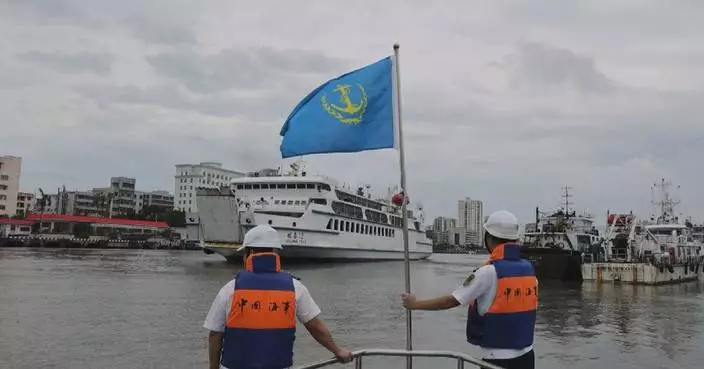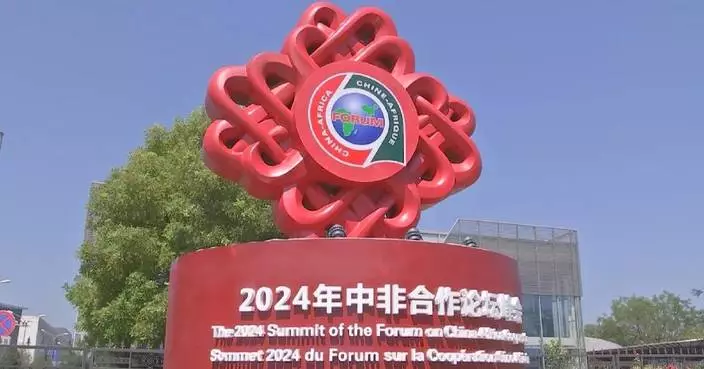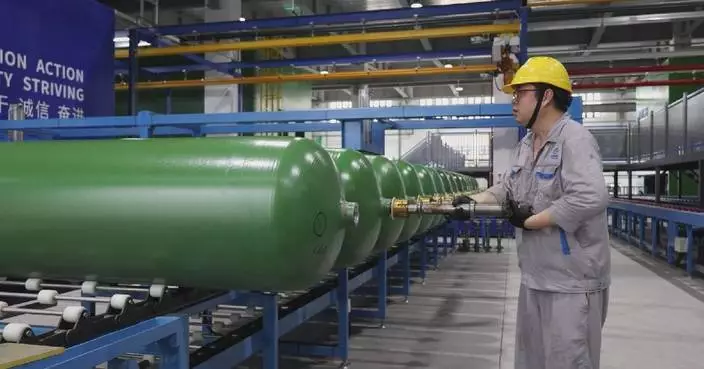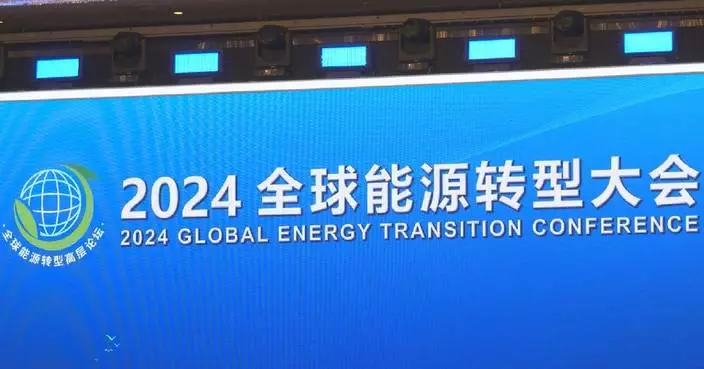People in Sudan's North Darfur region are facing acute food and medical supply shortages, as fierce clashes in May between the Sudanese Armed Forces (SAF) and the Rapid Support Forces (RSF) erupted in El Fasher, capital city of North Darfur State.
According to the State Ministry of Health in North Darfur, the recent escalation of conflict in El Fasher has resulted in the deaths of around 750 civilians, with over 4,700 injured.
Currently 800,000 people are trapped in El Fasher. Humanitarian aid cannot enter the city, leading to an extreme shortage of food, medicine and other supplies, according to World Health Organization.
"We have nothing to eat or drink. We have nothing to our name and many people are sick.We can't do anything and are living in misery," said Amna Alhadi, a resident from El Fasher.
The conflict in the Darfur region has displaced over 4 million people in the past year. Many of these displaced individuals now reside in dozens of local refugee camps, where conditions are extremely challenging. The camps have limited facilities and are overcrowded, plagued by issues such as garbage accumulation, mosquitoes, and shortage of food and clean drinking water.
"Some people have leftover food, others go to their neighbors to share food with them, and others are starving because they have no food," said Yousri Ismail, a refugee.
The health care system in El Fasher is also on the brink of collapse, with all medical facilities having stopped operating except for one hospital and four primary health care centers. Outbreaks of infectious diseases such as cholera and diarrhea have started to spread within some of the refugee camps.
The United Nations Office for the Coordination of Humanitarian Affairs has warned that as the armed conflict continues, the humanitarian situation in Sudan will deteriorate even more.
"I call on both sides of the conflict to stop the war and open corridors so that humanitarian aid can enter the camps of the displaced to save Sudanese people," said Afaf Issa, a relief worker.
Sudan has been engulfed in a deadly conflict between the SAF and the RSF since April 2023, resulting in the loss of at least 16,650 lives, according to an update by the UN Office for the Coordination of Humanitarian Affairs in June.
Data published by the UN International Organization for Migration in June showed that more than 7.7 million individuals had been internally displaced within Sudan since the conflict began, with approximately 2.2 million others seeking refuge in neighboring countries.

Severe shortages of food, medical supplies plague Sudan's North Darfur

Severe shortages of food, medical supplies plague Sudan's North Darfur
North China's municipality of Tianjin plays a pivotal role in China's aerospace development, thanks to its extensive capabilities in manufacturing, assembly, testing and, more importantly, talent.
The port city is integral to the assembly of major components for the country's orbiting Tiangong space station, including the Tianhe core module and the Wentian and Mengtian laboratory modules.
The Tianhe core serves as the module management and control center, the main living space of the crew and supports some scientific and technological experiments.
The Wentian module is primarily used for scientific and technological experiments, as well as providing working and living space, and shelter in emergencies. And the Mengtian module, similar to the Wentian module in functions, is equipped with a special airlock chamber to support the entry and exit of cargo and instruments with the help of astronauts and mechanical arms.
Tianjin, equipped with state-of-the-art facilities, ensures precision engineering through advanced technologies such as augmented reality (AR) glasses, which assist in the accurate installation of cables and components.
Tianjin’s contributions to the aerospace industry extend beyond the assembly of space station modules to the manufacturing of the new large carrier rocket, the Long March-5B.
The Long March-5B, designed as the country's strongest carrier rocket, has a payload capacity of 25 tonnes to low Earth orbit, or 14 tonnes to geostationary transfer orbit, serving as the primary vehicle for transporting the space station's major segments.
For instance, the Tianhe core module of the space station, measuring 16.6 meters in length and weighing over 22 tonnes, can only be launched by the Long March-5B, highlighting Tianjin's critical role in China’s space missions.
Tianjin was selected as the base for the production and assembly of the Long March-5B rocket, due to its exceptional manufacturing capabilities, skilled workforce, and strategic location.
This decision reflects the city's coordination within the Beijing-Tianjin-Hebei region, which enhances the regional synergy on a larger scale.
Another advantage that Tianjin has is its strong reserve of talent and expertise.
Nearly 80 percent of the components for the Long March-5B rocket are produced locally in Tianjin, while the design experts are based in Beijing.
Tianjin's robust industrial base demonstrates its strong capability in transforming theoretical designs into tangible and high-performance rockets.
Furthermore, the city's unique geographical location offers a transportation advantage for the large rockets. They can be shipped directly to the port for further delivery, avoiding potential risks associated with land transportation, such as navigating bridges and tunnels.
Looking ahead, when the country is about to celebrate the 75th anniversary of the founding of People's Republic of China on Oct 1, the dedicated aerospace team in Tianjin has highlighted their efforts and the city's contributions, looking forward to a brighter future.
"We, the Tianjin rocket base, have consistently contributed to China's aerospace development," said Liu Xu, a staff member at the China Aerospace Science and Technology Corporation.
"The entire Tianjin base has successfully completed the development of the three major modules for the country's space station, along with all related experiments," said Wei Pengwei, another staff member.
"We have developed a new generation of flexible solar arrays (the solar arrays are used to power the modules of the space station) in Tianjin, which serves both the Chinese space station and manned spacecraft," said Liu Bo, chief designer at a subsidiary company under the China Electronics Technology Group Corporation.
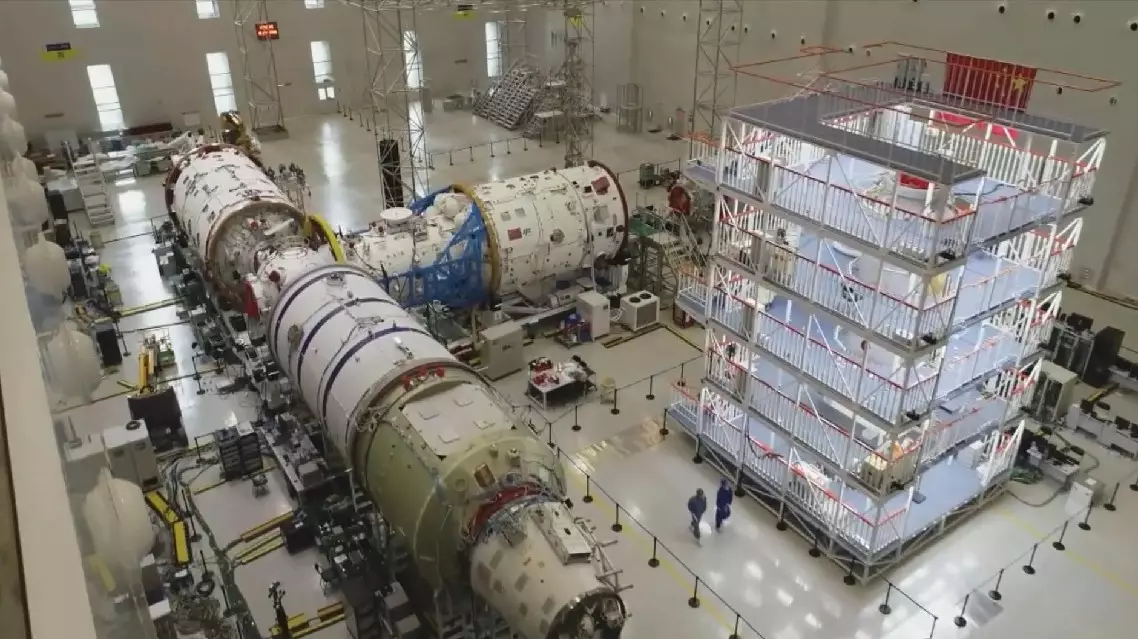
Tianjin key to China's aerospace development





